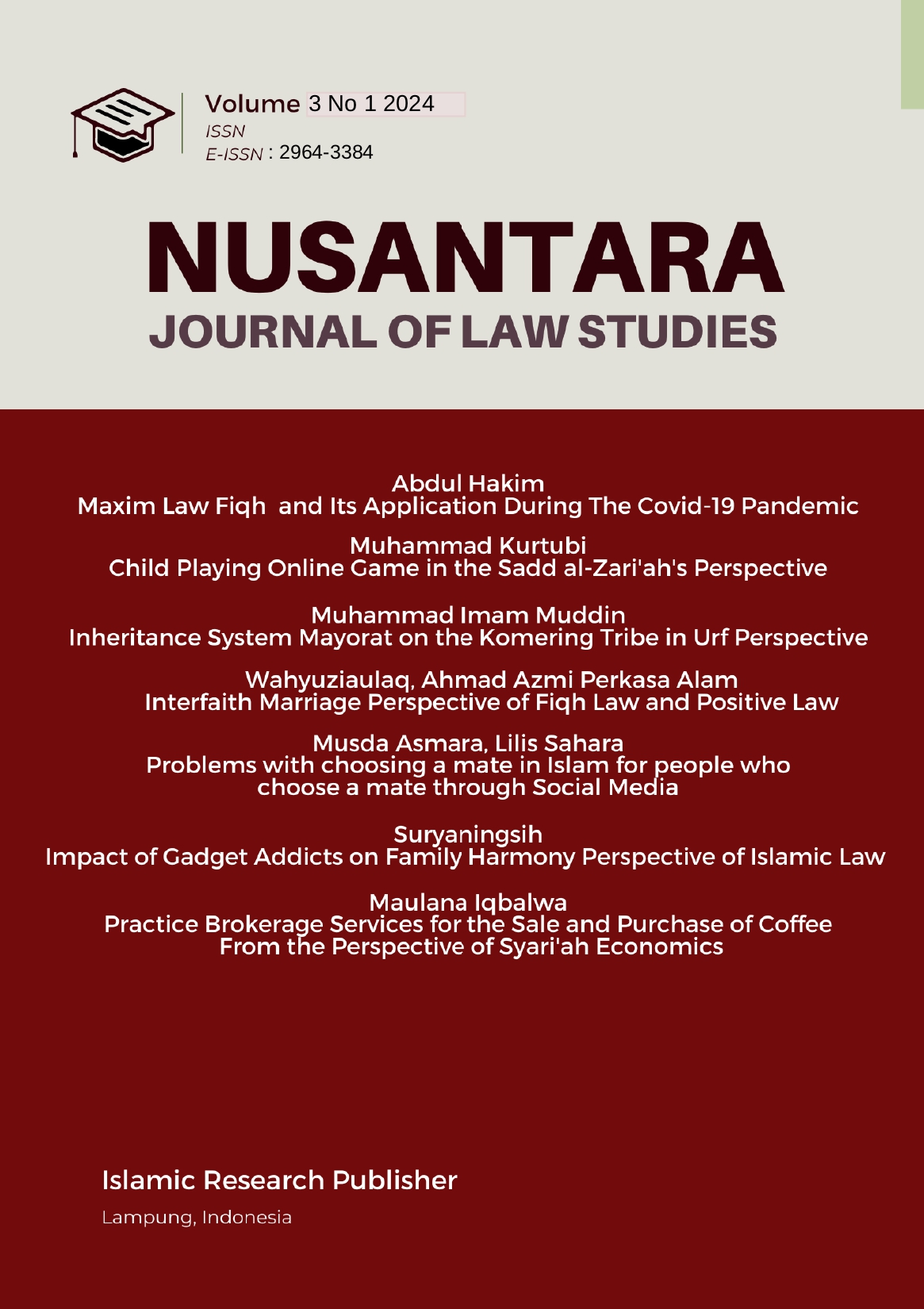Contemporary Challenges and Legal Resolutions in the Implementation of Accessibility Rights for Persons with Disabilities in Indonesia
DOI:
https://doi.org/10.5281/zenodo.17373273Keywords:
Accessibility Rights; Legal Implementation; Inclusive Policy; Contemporary Challenges.Abstract
This study examines the contemporary challenges and legal solutions to implementing accessibility rights for persons with disabilities in Indonesia. It aims to evaluate the level of accessibility across public facilities and analyse the effectiveness of existing legal frameworks, including Law No. 8 of 2016 on Persons with Disabilities and its derivative regulations. Using a qualitative approach that integrates literature review, legal framework analysis, and case study assessment, the research explores how national laws are applied at the local level and identifies the factors that hinder inclusivity in public spaces. The findings reveal that, despite the presence of comprehensive legal protections, significant implementation gaps persist. Many public spaces, educational institutions, and workplaces fail to meet accessibility standards, particularly affecting individuals with mobility and sensory impairments. Barriers are both social and physical, including limited public awareness, inadequate infrastructure such as ramps and sidewalks, weak institutional coordination, and insufficient monitoring mechanisms. Furthermore, local governments often lack the technical capacity and financial resources to enforce accessibility regulations effectively. To address these issues, this study proposes several legal and policy recommendations: (1) strengthening the enforcement of accessibility laws and local regulations; (2) prioritising funding and training for inclusive infrastructure development; (3) promoting intersectoral collaboration among government institutions, disability organisations, and communities; and (4) enhancing public awareness about disability rights and inclusive design. Academically, this research contributes to the discourse on human rights and inclusive law by emphasising the need for a rights-based, participatory, and contextually responsive legal approach to disability inclusion in contemporary Indonesia.
Downloads
References
Astuti, N. D., & Nuriyah, S., Nugroho, R. (2016). Accessible infrastructure for people with disabilities based on Indonesian local wisdom. Journal of Urban Sustainable Development, 1-16.
Clarke, P., & George, L. K. (2016). The role of the built environment in the disability process. American Journal of Public Health, 95(11), 1933-1939.
Creswell, J. W. (2013). Qualitative inquiry and research design: Choosing among five approaches. Sage Publications.
Damayanti, R., & Rullyanto, A. (2020). Evaluation of Accessibility of Public Buildings for Persons with Mobility Disabilities in Jakarta. Proceedings of the National Engineering Seminar, 198, 1108-1116.
Dewi, R. E., & Purnama, I. (2019). Towards a Framework for Barrier-Free Environments in Urban Public Spaces. EMU Journal of Architectural Research, 1(1), 99-110.
Gleeson, B. (2015). Geographies of disability. Downloaded from Routledge.
Hamra, A. (2019). Implementation challenges of accessibility for people with disabilities in Indonesian cities: A case study of Yogyakarta City. Research on Urban and Regional Planning and Development, 1(1), 12-23.
Imrie, R. (2016). Universalism, universal design and equitable access to the built environment. Disability and Rehabilitation, 34(10), 873-882.
Law No. 8 Year 2016 on Persons with Disabilities. (2016).
Merriam, S. B. (2009). Qualitative research: A guide to design and implementation. Jossey-Bass.
Minister of Public Works Decree No. 403/KPTS/M/2002 on Technical Guidelines for Facilities and Accessibility in Buildings and the Environment. (2002).
Mulyono, M., & Mahaendra, E. N. (2018). Accessibility for Persons with Disabilities in Public Spaces: A Study in Jakarta Pedestrian Walkways. Journal of Accessibility and Design for All, 8(2), 143-164.
Muta'ali, L. (2020). Evaluation of Universal Design of the Built Environment in Urban Areas (Case Study: Pedestrians in Malioboro Area, Yogyakarta).
Patton, M. Q. (2015). Qualitative research & evaluation methods: Integrating theory and practice. Sage Publications.
Prentice, C. (2015). Disability, proximity and urban walking. Social & Cultural Geography, 16(8), 897-919.
Putra, I. E., & Tjahjono, G. (2019). Accessibility for mobility aid users in Indonesia, what can we learn from Swedish law? MATEC Web of Conferences, 258, 01002.
Putranto, L., Hikmat, H., & Prastica, R. (2020). Accessibility and Mobility of Persons with Disabilities in Indonesia: A Policy Review. Journal of Policy Research and Public Administration, 3(1), 1-19.
Rahmawati, D., & Puspitasari, A. (2017). Accessibility for persons with disabilities in Indonesia: a policy analysis. International Journal on Disability Law and Policy, 3(1), 119-145.
Samiadji, I., & Sudiatmika, R. (2017). Defining public space for people with disabilities. Journal of Public Space, 2(1), 97-108.
Santoso, W., Nugroho, Y. A., Hidayat, S., & Sunaryo, I. (2020). Obstacles and Solutions in the Implementation of the Act on Persons with Disability. Journal of Indonesian Social and Political Studies, 2(1), 56-65.
Saputra, A., Hadiwardoyo, S., Sugiarto, S., & Brown, J. (2018). Improving accessibility for people with disabilities in urban areas: A case study in Jakarta, Indonesia. Journal of Accessibility and Design for All, 8(2), 152-173.
Setiawan, B. (2020). Pedestrian Accessibility in Urban Slums in Developing Countries. Transportation Policy Case Study, 8(2), 480-491.
Sudarno, I. (2018). Legal Protection Efforts for Persons with Disabilities in Road Accessibility and Public Buildings in Semarang City. Journal of Legal Dynamics, 18(2), 254-266.
Sutapa, I., & Ismail, A. (2018). Barrier-free environment in Indonesian urban areas: The case of Bandung City. *Kota*, 74, 38-50.
WHO. (2011). World report on disability 2011. *World Health Organization*.
Downloads
Published
How to Cite
Issue
Section
License
Copyright (c) 2024 Rohmah Ageng Mursita

This work is licensed under a Creative Commons Attribution-ShareAlike 4.0 International License.














